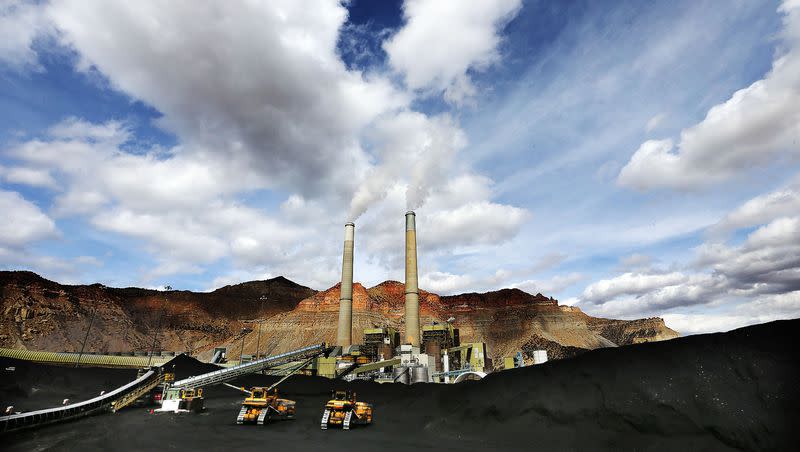Romney and Lee join GOP colleagues to challenge new EPA power plant rule

- Oops!Something went wrong.Please try again later.
- Oops!Something went wrong.Please try again later.
A group of senators, including Utah Sens. Mike Lee and Mitt Romney, say they oppose the Environmental Protection Agency’s latest rule because it will increase energy costs and make the nation’s energy supply less reliable.
This rule, proposed in May, is a first attempt by the federal government to regulate carbon emissions from existing power plants, and the senators say it may be at odds with a Supreme Court decision from 2022, which said the EPA couldn’t make sweeping regulatory changes without congressional approval.
“The Administration’s “Clean Power Plan 2.0” would effectively shut down affordable and reliable energy — intensifying the energy shortage the U.S. is already facing,” Romney, a Republican, said in a social media post. “To avoid an energy supply crisis, EPA should withdraw this unlawful proposal without delay.”
A majority of Republican senators, 39 in total, were listed as signatories to the letter opposing the rule, including Sen. Shelley Moore Capito of West Virginia, the ranking member on the Environment and Public Works Committee.
Is the Clean Power Plan 2.0 unlawful?
The EPA has been attempting to shift electricity production from fossil fuels, like coal and natural gas, to other sources that have lower carbon emissions.
Currently, around 60% of the country’s electricity comes from fossil fuels, including 22% from coal, according to 2021 federal data.
The senators say the rule violates section 111 of the Clean Air Act, which requires an emissions reduction system to be “adequately demonstrated.” They say the rule proposes the use of under-developed technologies — like carbon capture and sequestration as well as the use of hydrogen, a low greenhouse gas, the letter said.
So far, the EPA has been able to showcase only five projects that have used these new technologies, but none of them fulfill the stipulation in EPA’s rule requiring 90% of emissions to be captured by 2030.
The Department of Energy is funding carbon capture research projects at Congress’ request, the letter noted.
John Kerry, the first U.S. presidential envoy for climate, told The Associated Press in May that the carbon capture technology wasn’t available “at-scale yet.”
“And we can’t sit here and just pretend we’re going to automatically have something we don’t have today. Because we might not. It might not work,” he said.
Plus, even if the technology was available, the carbon capture and sequestration infrastructure would have to be in place by 2030, or coal plants will be at risk of shutting down. But permitting these projects has already proved to be slow, the letter said.
The lawmakers wrote that Americans, small businesses and manufacturers will bear the high cost and reduced supply of electricity if this proposed rule passes.
“If the proposed Clean Power Plan 2.0 is finalized ... our country will face a crisis in electricity supply that will dwarf the regional outages that we have seen in California, Texas, and New England in recent years,” it said.
Is the U.S. headed for an energy reliability crisis?
The president of the environmental conservation group Earthjustice, Abigail Dillen, issued a statement when the rule was proposed, saying that it was “a much-needed step forward.”
“It is essential to meeting our climate goals that we have the strongest possible limits on carbon pollution. Getting this right is non-negotiable, our future depends on it,” she said.
But in the time since the rule was proposed, the Senate Committee on Energy and Natural Resources has held two hearings and all the witnesses, from chief executive officers of the North American Electric Reliability Corporation to the Federal Energy Regulatory commissioner, agreed that the U.S. is headed towards a reliability crisis.
The original Clean Power Plan was introduced under the Obama administration in 2015. The goal was to set limits on carbon pollution from power plants. As Politico reported, the EPA went through a lengthy comment and feedback period, which included comments from state and federal government agencies as well as power companies. But under the Trump administration the Affordable Clean Energy Rule, which required states to focus on making power plants more efficient, was signed into law.
Meanwhile, the Supreme Court struck down the original Clean Power Plan in 2022, stating in its decision that the EPA lacked authority to implement the plan without congressional approval. It’s unclear whether the Supreme Court will allow the EPA to move forward with the Clean Power Plan 2.0.

